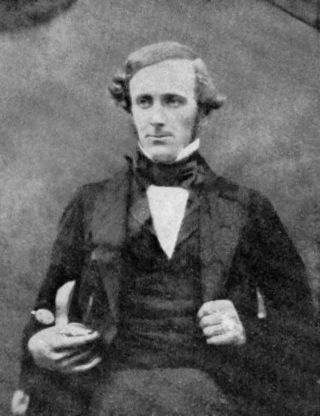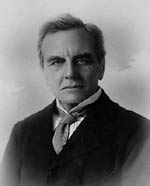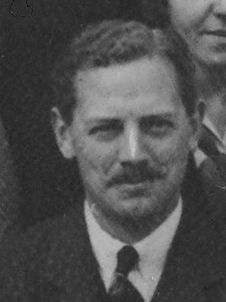Related Research Articles

Ernest Rutherford, 1st Baron Rutherford of Nelson, was a New Zealand physicist who came to be known as the father of nuclear physics. Encyclopædia Britannica considers him to be the greatest experimentalist since Michael Faraday (1791–1867). Apart from his work in his homeland, he spent a substantial amount of his career abroad, in both Canada and the United Kingdom.

Sir William Ramsay was a Scottish chemist who discovered the noble gases and received the Nobel Prize in Chemistry in 1904 "in recognition of his services in the discovery of the inert gaseous elements in air" along with his collaborator, John William Strutt, 3rd Baron Rayleigh, who received the Nobel Prize in Physics that same year for their discovery of argon. After the two men identified argon, Ramsay investigated other atmospheric gases. His work in isolating argon, helium, neon, krypton, and xenon led to the development of a new section of the periodic table.

Thomas Graham was a British chemist known for his pioneering work in dialysis and the diffusion of gases. He is regarded as one of the founders of colloid chemistry.

Edward Arthur Milne FRS was a British astrophysicist and mathematician.

Sir Walter Norman Haworth FRS was a British chemist best known for his groundbreaking work on ascorbic acid while working at the University of Birmingham. He received the 1937 Nobel Prize in Chemistry "for his investigations on carbohydrates and vitamin C". The prize was shared with Swiss chemist Paul Karrer for his work on other vitamins.

Francis William Aston FRS was a British chemist and physicist who won the 1922 Nobel Prize in Chemistry for his discovery, by means of his mass spectrograph, of isotopes in many non-radioactive elements and for his enunciation of the whole number rule. He was a fellow of the Royal Society and Fellow of Trinity College, Cambridge.

Sir Edward Frankland, was an English chemist. He was one of the originators of organometallic chemistry and introduced the concept of combining power or valence. An expert in water quality and analysis, he was a member of the second royal commission on the pollution of rivers, and studied London's water quality for decades. He also studied luminous flames and the effects of atmospheric pressure on dense ignited gas, and was one of the discoverers of helium.

Silvanus Phillips Thompson was an English professor of physics at the City and Guilds Technical College in Finsbury, England. He was elected to the Royal Society in 1891 and was known for his work as an electrical engineer and as an author. Thompson's most enduring publication is his 1910 text Calculus Made Easy, which teaches the fundamentals of infinitesimal calculus, and is still in print. Thompson also wrote a popular physics text, Elementary Lessons in Electricity and Magnetism, as well as biographies of Lord Kelvin and Michael Faraday.

Arthur Lapworth FRS was a Scottish chemist.

Herbert Brereton Baker was an English inorganic chemist.

Prof William Johnson Sollas PGS FRS FRSE LLD was a British geologist and anthropologist. After studying at the City of London School, the Royal College of Chemistry and the Royal School of Mines he matriculated to St. John's College, Cambridge, where he was awarded First Class Honours in geology. After some time spent as a University Extension lecturer he became lecturer in Geology and Zoology at University College, Bristol in 1879, where he stayed until he was offered the post of Professor of Geology at Trinity College Dublin. In 1897 he was offered the post of Professor of Geology at the University of Oxford, which he accepted.

Augustus George Vernon Harcourt FRS was an English chemist who spent his career at Oxford University. He was one of the first scientists to do quantitative work in the field of chemical kinetics. His uncle, William Vernon Harcourt (1789–1871), founded the British Association for the Advancement of Science.
Sir James Walker FRS FRSE FCS LLD was a Scottish chemist.
Harold Baily Dixon (1852–1930) was a British chemist. He was also an amateur footballer who appeared for Oxford University in the 1873 FA Cup Final.
Arthur George Perkin DSc FRS FRSE (1861–1937) was an English chemist and Professor of Colour Chemistry and Dyeing at the University of Leeds.

Sir Christopher Martin Dobson was a British chemist, who was the John Humphrey Plummer Professor of Chemical and Structural Biology in the Department of Chemistry at the University of Cambridge, and Master of St John's College, Cambridge.

The position of Savilian Professor of Geometry was established at the University of Oxford in 1619. It was founded by Sir Henry Savile, a mathematician and classical scholar who was Warden of Merton College, Oxford, and Provost of Eton College, reacting to what has been described by one 20th-century mathematician as "the wretched state of mathematical studies in England" at that time. He appointed Henry Briggs as the first professor. Edward Titchmarsh said when applying that he was not prepared to lecture on geometry, and the requirement was removed from the duties of the post to enable his appointment, although the title of the chair was not changed. The two Savilian chairs have been linked with professorial fellowships at New College, Oxford, since the late 19th century. Before then, for over 175 years until the middle of the 19th century, the geometry professors had an official residence adjoining the college in New College Lane.
William Arthur Bone, FRS was a British fuel technologist and chemist.
Henry George Madan was an English chemist, teacher and academic.

John Masson Gulland was a Scottish chemist and biochemist. His main work was on nucleic acids, morphine and aporphine alkaloids. His work at University College Nottingham on electrometric titration was important in leading to the discovery of the DNA double helix by James Watson and Francis Crick, and he was described as "a great nucleic acid chemist." He established the Scottish Seaweed Research Association and the Lace Research Council.
References
- ↑ Obituary notice, Fellow: Esson, William, Monthly Notices of the Royal Astronomical Society, Vol. 77, p.299, 1917MNRAS..77..299., The SAO/NASA Astrophysics Data System
- ↑ Obituary, Royal Society of Chemistry
- ↑ "Fellow Details". Royal Society. Retrieved 20 January 2017.
- ↑ "School Notes" (PDF). The Abingdonian.
- ↑ Hinchcliffe, Tanis (1992). North Oxford. New Haven & London: Yale University Press. p. 220. ISBN 0-14-071045-0.
- ↑ GRO Register of Deaths: Deaths SEP 1916 2c 348 ABINGDON — Willian Esson, aged 78